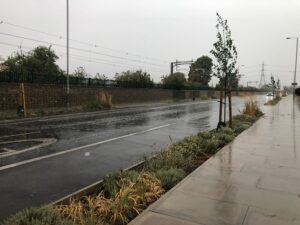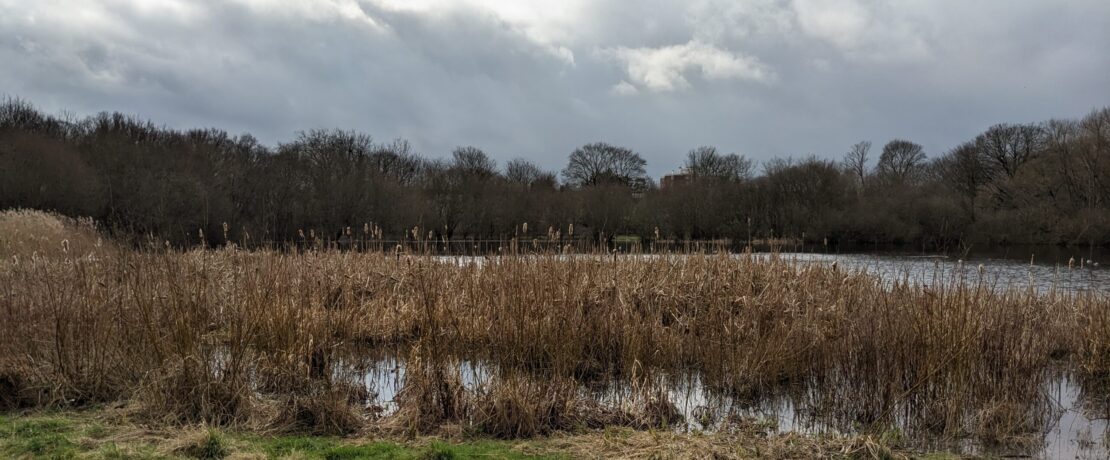To manage flooding in London, we have to reduce car ownership. But why?
London used to be like a sponge, soaking up rainwater. Over time, much of London has been paved over to accommodate development but also more and more cars. Instead of rainwater being absorbed, it now runs off into drains which are overwhelmed. Flooding is the result.
Roads and parking cause run-off but can be converted to natural surface by reinstating front gardens or creating rain gardens on roads, for example – and this is key to ensuring London becomes resilient to flooding as the city experiences more frequent high rainfall events. Thames Water states the run-off from a massive 7,000 hectares of hardstanding (paved surface) needs to be managed via this kind of ‘nature based solution’: essentially they are saying we need to covert a very large amount of hardstanding into surface which can hold water.

https://twitter.com/MeristemDesign/status/1559917528129966080
We recently responded to the GLA’s request for feedback on the London Climate Resilience Review and used the opportunity to stress the critical links between climate resilience and transport policies. We support the important recommendations proposed in the review but we also made the following comments:
- Much of London has been paved over to accommodate cars, reducing its porousness. Paving over creates an urban heat island and also cars increase heat when moving (when fuel is converted to heat) and parked (when metal heats up and then emits heat). Reducing car use and car ownership in London is critical to managing heat and flooding. Transport strategy should link to climate resilience strategy, and both should recognise the need to dramatically reduce paved surface (roads and parking spaces) and replace it with natural surface (soil, planting, trees, SUDS).
- The role front and back gardens play in delivering climate resilience should be specifically recognised, not least because further paving over of front gardens will negate the impact of new on-street rain gardens, but also because the reinstatement of gardens to natural surface (soil, planting) is part of the solution to flood management. Equally it should be recognised that supposedly ‘porous’ surfaces, installed in front gardens converted for parking, become ineffective over time and can fail entirely in heavy rain (read more).
- Given that front gardens need to provide habitat and air cooling, as well as drainage, the Mayor should seek powers to reinstate front gardens i.e. so they are de-paved and replaced with soil and planting; and introduce a policy in the London Plan to halt the conversion of front gardens for parking AND reinstate front gardens and/or pressure Government to change the current regulations, wherein local authorities have no control over the conversion of front gardens for parking. London needs also to achieve a major reduction in car ownership, to deliver Healthy Streets as per the Mayor’s Transport Strategy, so discouraging the allocation of space for car parking is also important from that perspective.
- We also used the opportunity to stress how important it will be for the new London Plan to designate large green spaces for habitat creation, flood management and tree cover. Currently swathes of protected Green Belt and Metropolitan Open Land have no clear identity or function and many have been bought by developers, deliberately taken out of use and sometimes fenced off. They are a huge opportunity, critical to delivering climate resilience and securing nature’s recovery, and need to be recognised as such in the London Plan and Local Plans.









